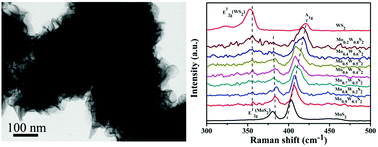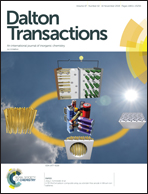Microwave-assisted mass synthesis of Mo1−xWxS2 alloy composites with a tunable lithium storage property†
Abstract
Layered transition metal disulfides (TMDs) possess intriguing properties and hold enormous potential for applications in electronic, optoelectronic, catalytic and energy storage devices. It is an emerging and impactful technology to develop TMD alloys for diverse applications, but mass synthesis of the TMD alloys with tunable compositions and properties remains a major challenge. Herein, we develop a facile but effective microwave-assisted solvothermal method for mass production of Mo1−xWxS2 (0 ≤ x ≤ 1) alloy composites. Inexpensive MoCl5, WCl6, and sulfur are used as raw materials and N-methylpyrrolidone (NMP) acts as an excellent reaction solvent. The atomic ratio of Mo/W in the Mo1−xWxS2 alloys can be precisely controlled by adjusting the molar ratio of MoCl5 and WCl6. The relationship between the structures of Mo1−xWxS2 and their properties such as characteristic Raman scattering, electronic conductivity and lithium storage properties is investigated as well. These results demonstrated the feasibility of effectively regulating the performance of the Mo1−xWxS2 alloys and provide a meaningful reference for further research on the Mo1−xWxS2 alloy materials for a variety of applications.



 Please wait while we load your content...
Please wait while we load your content...